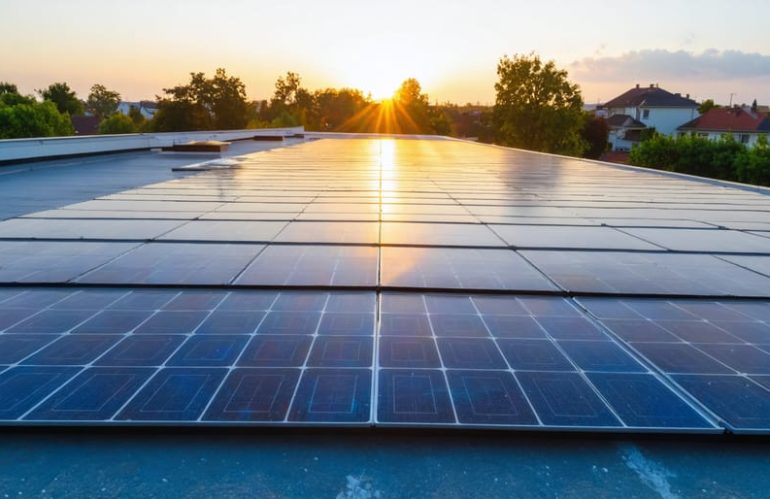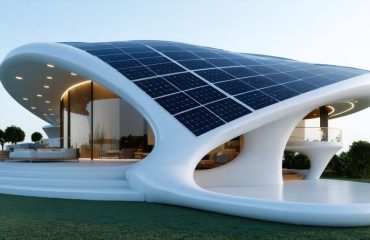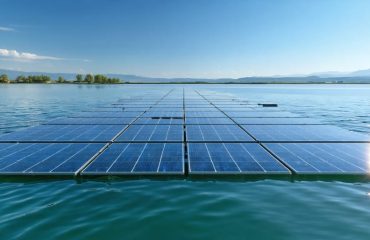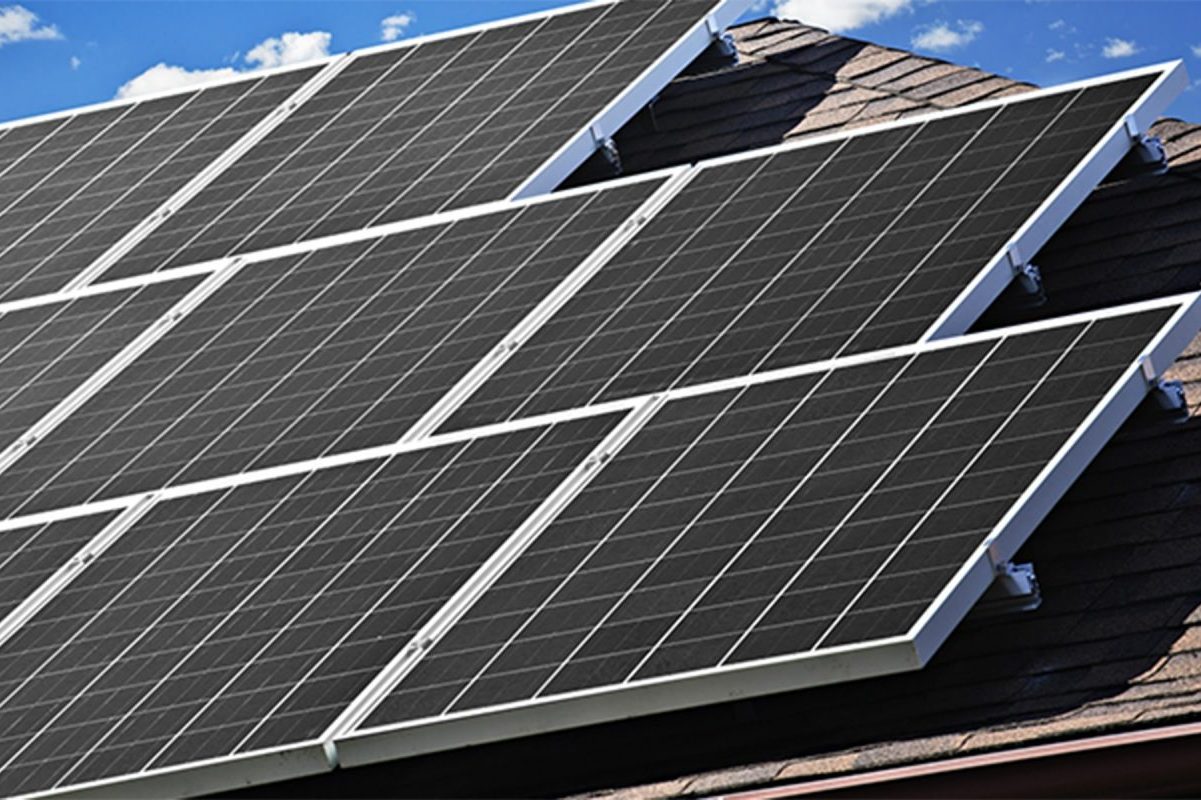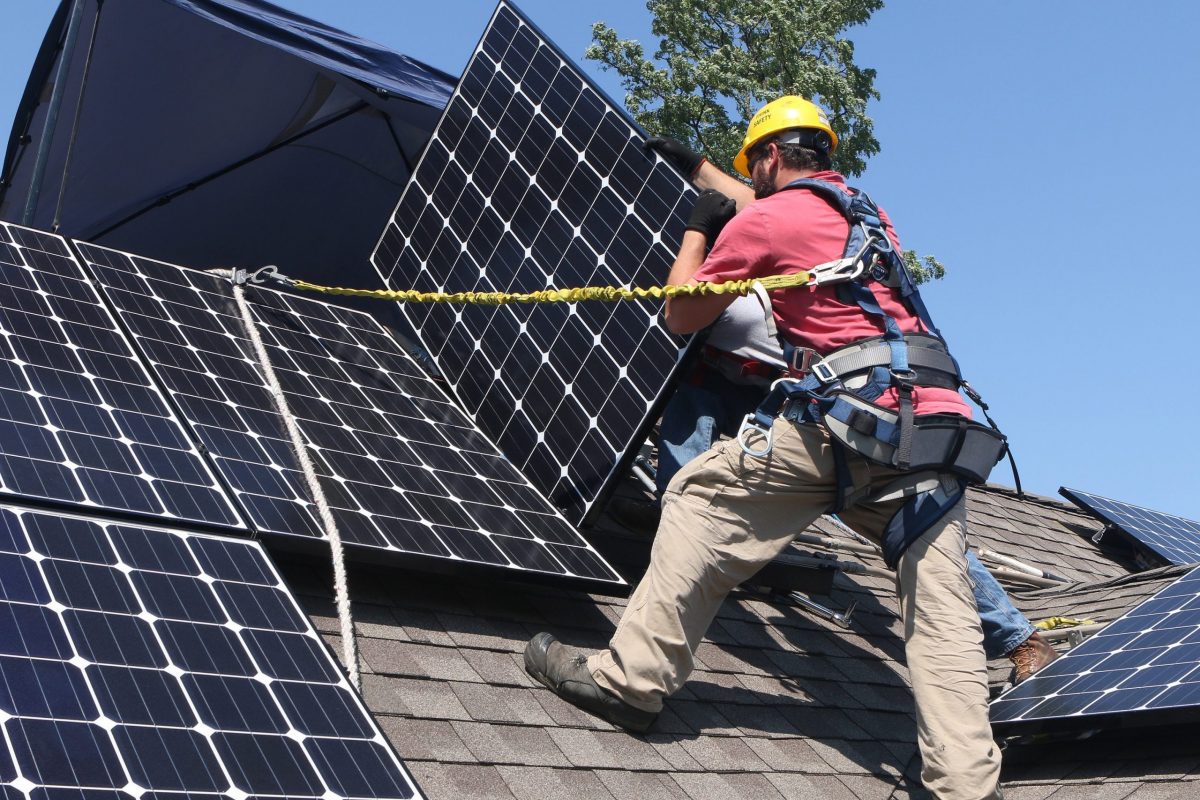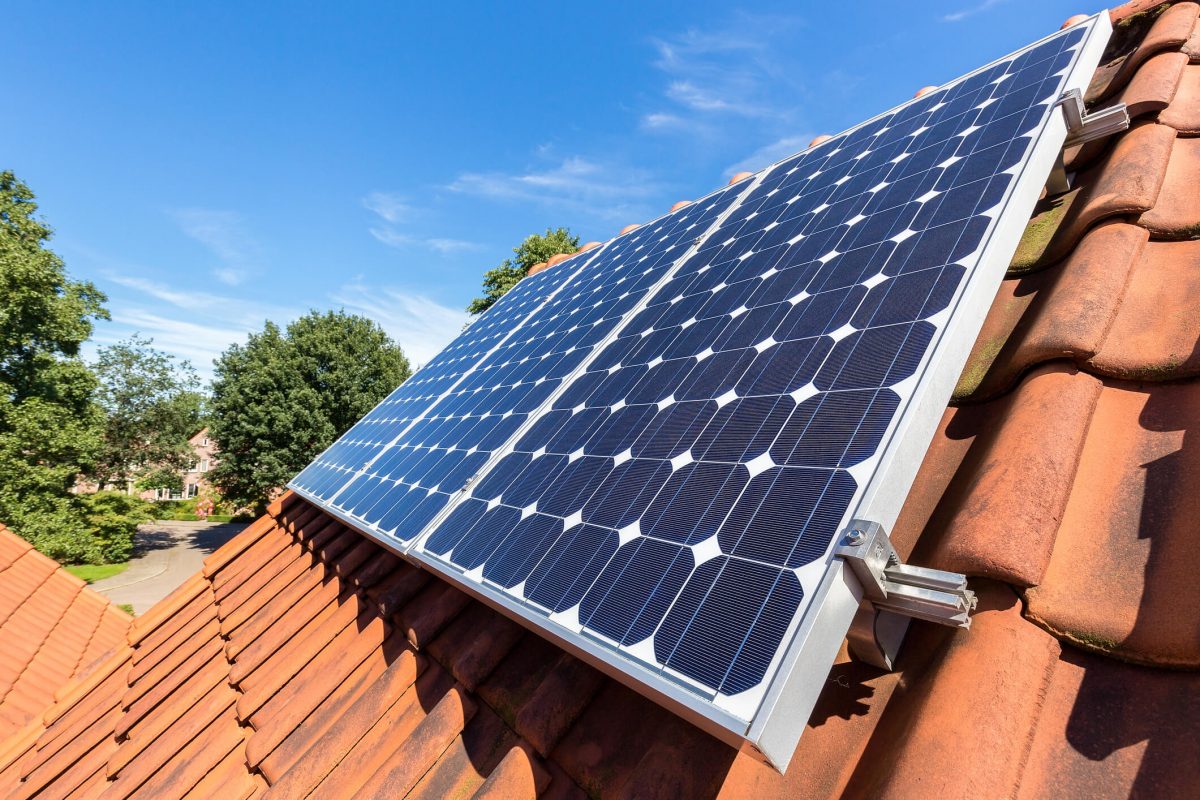Every second, your rooftop could be converting free sunlight into usable electricity through a fascinating two-step energy transformation. Solar panels perform an elegant dance of physics: photons from the sun strike silicon cells, knocking electrons loose and creating direct current (DC) electricity, which your inverter then transforms into the alternating current (AC) that powers your home. This process, known as the photovoltaic effect, has quietly revolutionized residential energy for decades—but it’s just the beginning.
Today’s breakthrough solar technology is pushing beyond traditional silicon panels. Advanced systems like solar thermophotovoltaics add an extra conversion step, first capturing heat energy before transforming it into electricity, potentially squeezing more power from the same sunlight. Yet here’s what matters most for homeowners: while scientists continue improving efficiency rates, current solar panels already deliver proven, reliable energy transformations that slash your electricity bills from day one. Understanding how these energy conversions work helps you appreciate the technology on your roof—and why waiting for “better” panels means losing money on electricity you could already be generating yourself.
The Journey of Sunlight to Electricity: Understanding Traditional Solar Panels
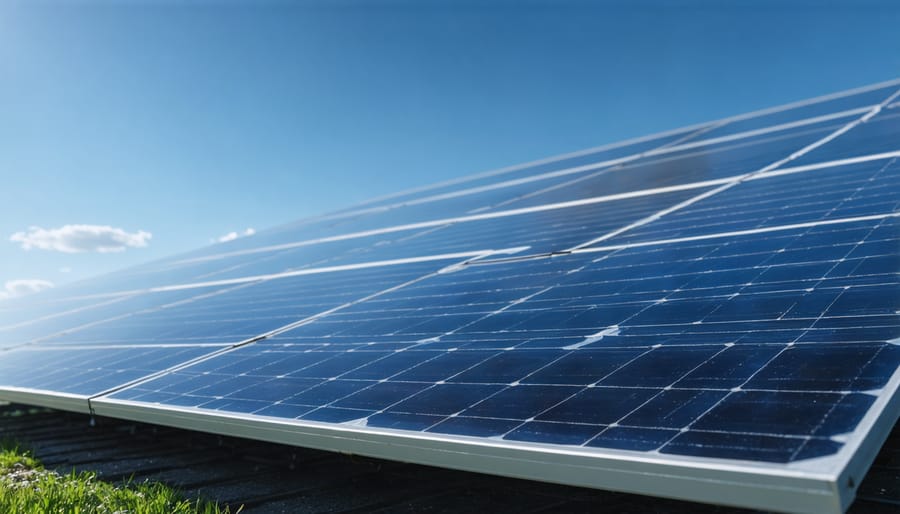
What Actually Happens When Sunlight Hits Your Roof
When sunlight reaches your solar panel, something remarkable happens in just billionths of a second. Think of it like a incredibly efficient chain reaction that turns light into usable electricity for your home.
First, tiny particles of light called photons strike the solar panel’s surface. Imagine these photons as tiny messengers carrying energy packages from the sun, traveling 93 million miles to reach your roof. When they arrive, they don’t just bounce off—they get absorbed by the silicon cells in your panel.
Here’s where the magic happens: those photons knock electrons loose from their atoms, similar to how hitting a cue ball sends other billiard balls rolling across a table. These freed electrons start moving, creating an electrical current. The solar panel’s design acts like a one-way street, ensuring these electrons flow in a specific direction.
This flowing stream of electrons is direct current (DC) electricity—the same type that powers your phone battery. However, your home runs on alternating current (AC) electricity, so an inverter converts that DC power into AC power you can actually use for your appliances, lights, and air conditioning.
The entire process happens continuously throughout daylight hours, silently and without any moving parts. No fuel burns, no emissions release, and nothing wears out quickly. Your roof essentially becomes a power plant, transforming free sunlight into savings on your electricity bill every single day.
Why Traditional Panels Only Capture Part of the Sun’s Power
Here’s the good news: if your solar panels are converting 20% of sunlight into electricity, they’re performing exactly as designed. Standard solar panels work beautifully at what they do—transforming visible light into clean power for your home. But what about the other 80%?
Most of that energy becomes heat. Your panels warm up in the sun, which is completely normal. Some energy also reflects off the panel’s surface, and certain light wavelengths simply pass through without being captured. This isn’t a flaw in the technology—it’s just physics.
Think of it like this: a gasoline car engine only converts about 20-30% of its fuel into motion, yet we’ve built our entire transportation system on them. Your solar panels are already outperforming many energy technologies, and they’re doing it with free fuel from the sun.
The key insight? That “wasted” energy represents an opportunity. Researchers are developing ways to capture more of the sun’s spectrum, but today’s panels are already proven, reliable, and financially beneficial for most homeowners. Understanding these limitations helps you make informed decisions without falling into the trap of waiting for “perfect” technology that may be decades away.
Enter Solar Thermophotovoltaics: Capturing What Was Lost
The Two-Step Energy Dance
Imagine if your solar panel worked like a sophisticated energy translator, converting sunlight through two distinct stages instead of one. That’s exactly what solar thermophotovoltaic systems do—and while they sound complex, the concept is surprisingly straightforward.
Here’s how this two-step process works: First, the system captures sunlight and converts it into heat—lots of it. Think of it like a highly efficient solar oven, concentrating the sun’s energy to create extremely high temperatures. This thermal energy then gets directed onto a special material that glows intensely when heated.
Now comes the clever part: This glowing material doesn’t just release random light. It emits light waves at very specific wavelengths—frequencies that are perfectly matched to what photovoltaic cells can convert most efficiently into electricity. It’s like tuning a radio to catch the clearest signal possible.
Traditional solar panels must work with whatever mix of light wavelengths the sun provides, converting some wavelengths better than others. Solar thermophotovoltaic systems essentially “repackage” that sunlight into an optimized form that solar cells can use more completely.
Does this mean you should wait for this technology before going solar? Absolutely not. While solar thermophotovoltaics show promise for industrial applications, they’re currently complex and expensive. Standard photovoltaic panels already offer proven, cost-effective energy savings that start benefiting your wallet immediately—not years down the road.
The takeaway here isn’t about waiting for the next big thing. It’s understanding that solar technology continues advancing while today’s panels remain an excellent investment. The energy transformation happening on your roof right now is already remarkably efficient, saving homeowners thousands of dollars in energy costs every year.
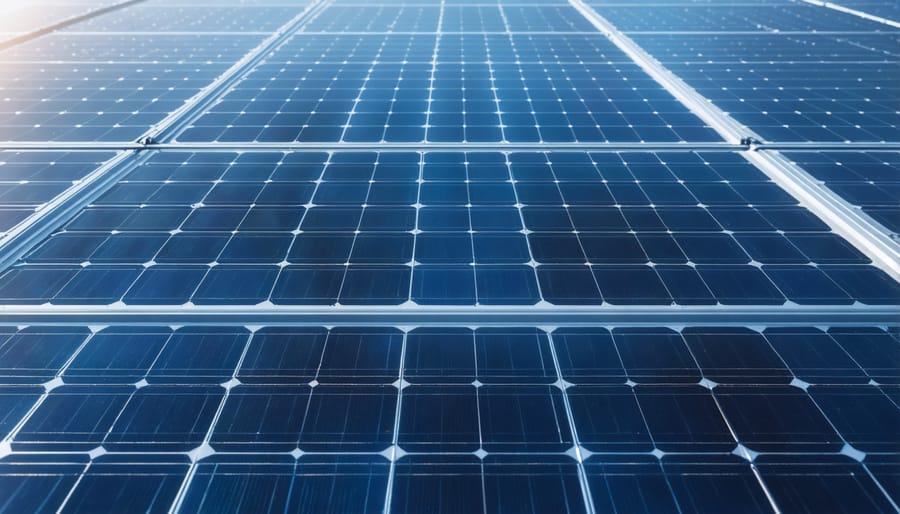
Why This Matters for Your Home
Understanding how solar panels convert sunlight into electricity helps you make smarter decisions about your home energy system. Modern solar technology has improved dramatically, meaning today’s panels generate significantly more power from the same roof space compared to systems from just five years ago. This matters because you can meet more of your household energy needs without expanding your installation area.
Better energy conversion also means your panels perform more consistently throughout the day. They capture usable energy even during morning and evening hours when sunlight hits at lower angles, and they handle partially cloudy conditions more effectively. These enhanced efficiency innovations translate directly to your electricity bill—more kilowatt-hours generated means greater savings month after month.
The financial impact compounds over your system’s 25+ year lifespan. Higher efficiency panels may cost slightly more upfront, but they deliver substantially more energy production over time, improving your return on investment. You’re not just buying panels; you’re investing in decades of reliable, clean energy that shields you from rising utility rates while reducing your carbon footprint.
The Energy Transformation Breakdown: From Heat to Power
Stage One: Absorbing Broad-Spectrum Sunlight
Traditional solar panels work wonderfully, but they leave money on the table by only capturing visible light. Think of the sun’s energy like a radio with many stations—conventional panels tune into just one or two, missing out on the rest.
Advanced absorbers change this game entirely. They’re designed to capture the full spectrum of sunlight, including the infrared heat waves that standard panels simply reflect away. This is significant because nearly half of the sun’s energy reaches us as infrared radiation—essentially wasted by traditional technology.
Here’s what makes this exciting for homeowners: by capturing more solar energy from the same rooftop space, these systems can potentially generate more electricity without requiring additional panels. The absorber acts like a highly efficient energy collector, soaking up everything from ultraviolet rays to infrared heat, then converting it all into usable power.
This broader energy capture means better performance on cloudy days and even improved efficiency during hot weather when traditional panels typically struggle. It’s about making every ray count toward lowering your electricity bills.
Stage Two: Converting Heat to Optimized Light
Once the thermal battery has stored heat energy, the system enters its most innovative phase. The thermal emitter—a specially engineered material—releases this stored heat as light, but not just any light. Think of it like a highly selective lamp that only produces the specific “colors” of light your solar cells love most.
Traditional solar panels waste energy because sunlight contains wavelengths they simply can’t use. The thermal emitter solves this problem by converting heat into a narrow band of optimized light wavelengths that perfectly match what photovoltaic cells absorb best. It’s like having a translator that speaks exactly the language your solar cells understand.
This precision matters for your wallet. By eliminating wasted energy and delivering only useful light, these systems can theoretically achieve higher efficiency rates than conventional panels. The stored heat releases gradually, meaning you’re generating electricity even after the sun sets—addressing one of the biggest limitations homeowners face with standard solar installations.
Stage Three: Maximum Electricity Generation
Once sunlight reaches the photovoltaic cells at optimal angles and intensities, the real magic happens. The semiconductor material inside each cell—typically silicon—absorbs photons from the sunlight, which energizes electrons and sets them in motion. This creates a direct current (DC) of electricity.
Here’s what makes modern solar panels impressive: they’re designed to capture and convert energy with remarkably little waste. Quality panels today achieve 15-22% efficiency, meaning they transform that percentage of available sunlight into usable electricity. While that might sound modest, it’s actually quite effective for your daily energy needs.
The key to this efficiency lies in the cell’s internal structure. The semiconductor creates an electric field that pushes freed electrons in a specific direction, generating a steady flow of power. Anti-reflective coatings and precisely engineered cell layers ensure that absorbed light doesn’t escape as heat or reflection—it converts to electricity instead.
The best part? This conversion happens silently and automatically, with no moving parts to maintain. From the moment sunlight hits your roof, you’re generating clean power that can immediately reduce your energy bills.
What This Means for Residential Solar in Real Terms
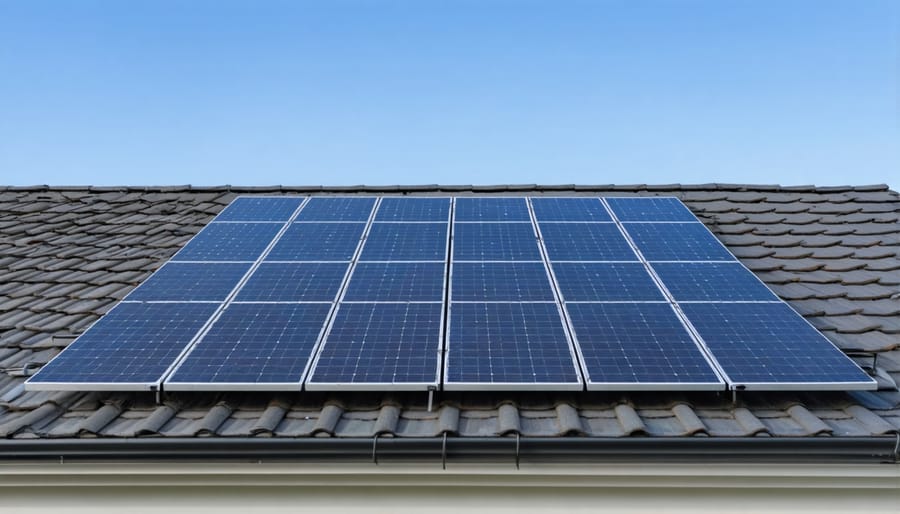
More Power, Same Space
One of the most exciting benefits of improved solar efficiency is that your roof doesn’t need to get any more crowded. Think of it this way: if your current panels convert 18% of sunlight into electricity, upgrading to panels with 22% efficiency means you’ll generate roughly 22% more power from the exact same roof space.
For homeowners, this translates into real advantages. Maybe you’ve been hesitant about solar because your roof has limited south-facing area, or perhaps trees shade part of your property. Higher-efficiency panels help you maximize every square foot you do have available. You’re essentially getting a bigger power plant in the same-sized package.
This also matters if your energy needs grow over time. Adding an electric vehicle or home battery system means you’ll need more electricity—and modern panels let you meet that demand without installing additional arrays or finding new mounting locations. You’re future-proofing your home’s energy system while keeping your roof aesthetically clean and uncluttered. Better efficiency doesn’t just mean advanced technology; it means practical flexibility for your household’s evolving needs.
When Will This Technology Reach Your Roof?
Today’s solar panels already deliver impressive results—most homeowners see 20-30% reductions in their electricity bills within the first year. While exciting innovations like solar thermophotovoltaics are making headlines in research labs, they’re still 5-10 years away from residential availability, and even longer before they become affordable for typical homeowners.
Here’s the good news: waiting isn’t your best strategy. Current solar technology is mature, reliable, and financially smart right now. Panels installed today typically pay for themselves in 6-10 years and last 25-30 years, meaning you’ll enjoy decades of savings regardless of future innovations.
Think of it like buying a smartphone—there’s always something better on the horizon, but today’s models work beautifully. Modern panels are also designed with future compatibility in mind, often allowing for system upgrades without complete replacement.
The smartest move? Start saving money and reducing your carbon footprint today with proven technology, rather than losing years of potential savings waiting for tomorrow’s breakthroughs. You can always add new technology later while enjoying immediate benefits now.
Making the Smart Choice Today While Looking Toward Tomorrow
You’ve probably heard someone say, “I’m waiting for solar technology to get better before I invest.” It’s a common concern, but here’s the truth: today’s solar panels are already remarkably efficient and proven. Waiting for tomorrow’s technology means missing out on years of immediate savings and environmental benefits.
Current solar panels typically convert 15-22% of sunlight into electricity—more than enough to dramatically reduce or eliminate your electric bill. Yes, researchers are exploring exciting technologies like solar thermophotovoltaics and future solar innovations, but these won’t make today’s systems obsolete. Think of it like smartphones: buying one today doesn’t mean you made a mistake when newer models arrive next year. You’re still benefiting from the technology right now.
Here’s what matters most: every month you delay is another month paying full price to your utility company. With the average solar system paying for itself in 6-10 years and lasting 25-30 years, earlier installation means longer savings. Federal tax credits and local incentives available today may not last forever either.
The energy transformation happening in your solar panels—converting photons into electrons—is already optimized for real-world conditions. Modern panels perform reliably in various climates, require minimal maintenance, and come with strong warranties.
Rather than waiting for hypothetical breakthroughs, you can start enjoying lower bills, increased home value, and reduced carbon footprint immediately. Tomorrow’s innovations will be exciting additions to the solar landscape, not replacements for what works exceptionally well today. The smartest choice is often the one that starts benefiting you right now.
The future of solar energy is brighter than ever, and the technology available today is already transforming how homeowners power their lives. While innovations like solar thermophotovoltaics promise exciting advances, current solar panels are proven, affordable, and ready to start saving you money immediately. Every month you wait is another month of paying full price to your utility company instead of harnessing free energy from the sun.
The energy transformation happening on your roof—converting sunlight into usable electricity—is remarkably efficient and reliable with modern panels. You don’t need to wait for “perfect” technology that may be years away from residential availability. Today’s solar systems typically pay for themselves within a few years and continue generating savings for decades.
Ready to join the solar revolution? The transition is simpler than you might think, and the financial and environmental benefits start the moment your system goes live. Schedule a free consultation today to discover exactly how much you could save and take your first step toward energy independence. Your future self—and your wallet—will thank you.

